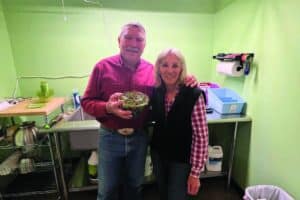To help maintain the ecosystems that are absorbing the greenhouse gasses, people can help pollinators out by adding more plants around their home. Pollinators are any animal or insect that causes plants to make fruit or seeds; by moving the pollen (the dusty grains that carry the male parts of a plant), reproduction can occur. Beyond the common bumblebees and butterflies, other pollinators include ants, birds (especially hummingbirds), bees, bats, moths and beetles.Earthday.org states that native plants are the best bets as the species in individual areas are specially adapted to pollinate the plants indigenous to their habitat. Some pollinator favorites include alyssum, basil, butterfly bush, fennel, lavender, marigold, oregano, verbena and yarrow.From extension.colostate.edu, providing plants that bloom early in the season until late is important for all pollinators, but it is also good to consider what type of flowers and potential nesting sites make the garden attractive to different species. For example, bees prefer a broad range of plants, some of which could provide pollen only, while others provide pollen and nectar. Bees like to focus on flowers of similar structure so grouping flowers of similar structure together while designing the landscape will work in sync with their preferences.It is best to plant in layers, replicating nature. Begin by establishing a basic structure with trees and shrubs. Then, add perennials, grasses and ground covers as further layers within the landscape.Here are some low-water plants to get started: Spreading Daisy, Sulphur Flower, Gro-Low Fragrant Sumac, Chocolate Flower, Harebells, Common Sunflower, Rocky Mountain Penstemon, Black-eyed Susan, Prickly Pear Cactus, Plains Yucca, Silvery Leadplant, Mountain Mahogany and Western Wild Rose.The Pike Peak Library District has a seed library that is free to use, they ask for a limit of three seed packets per family per month.FROM EARTHDAY.ORG:ìEARTHDAY.ORGís mission is to diversify, educate, and activate the environmental movement worldwide. Growing out of the first Earth Day (1970), EARTHDAY.ORG is the worldís largest recruiter to the environmental movement, working with more than 150,000 partners in nearly 192 countries to build environmental democracy. More than 1 billion people now participate in Earth Day actions each year, making it the largest civic observance in the world. Learn more at https://earthday.org.î






